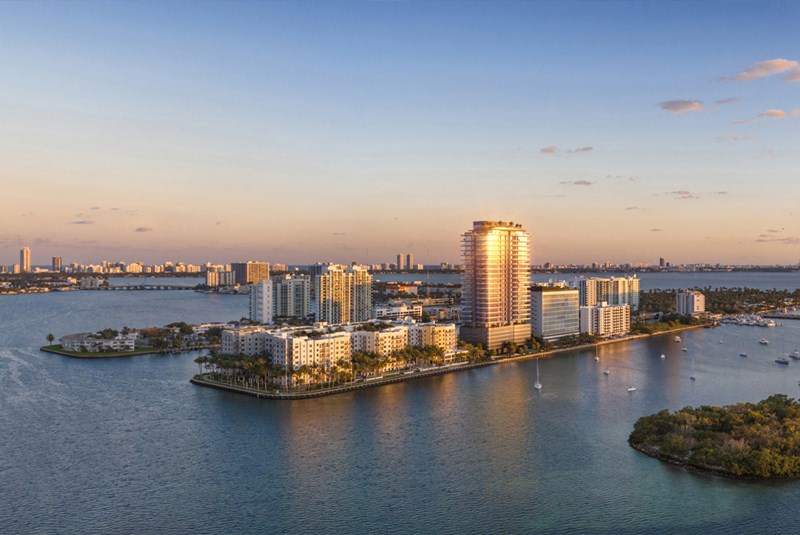The History of Miami’s Edgewater Neighborhood
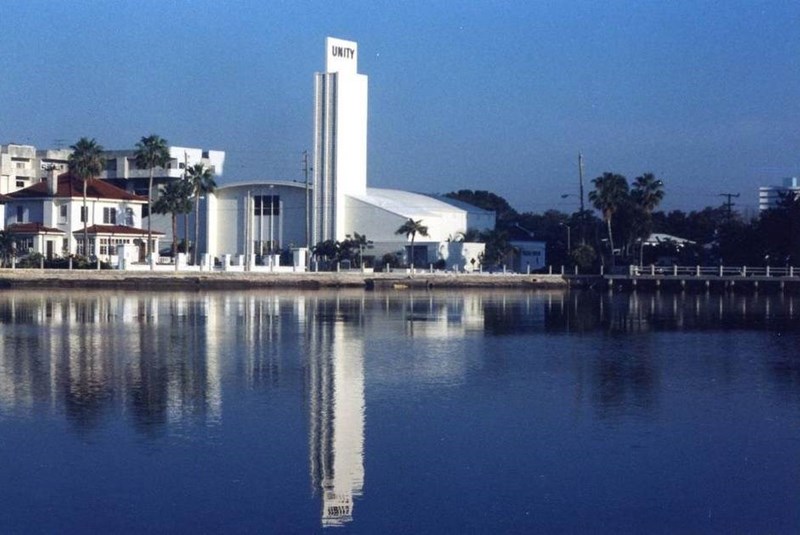
Jul 02, 2018 July 02, 2018
Edgewater is a long, and somewhat narrow neighborhood bordering Biscayne Bay in Miami. One of Miami’s oldest neighborhoods, it really developed in booms that mirror Miami’s repeated eras of development through its history.
Edgewater began as a neighborhood with a mixture of fine single family homes and small apartment buildings, bounded on one side by Biscayne Bay and on the other by the Florida East Coast Railway, in many small early 20th-century subdivisions. Since each subdivision contained only a few streets, there is a lot of irregularity in the grid street plan, with streets beginning here and ending there.
Then Biscayne Boulevard was plowed through in the 1920s, first by the Shoreland Company and then the Biscayne Boulevard Company, which was formed out of the remnants of the Shoreland Company after it went bankrupt after the 1926 hurricane.The grand, four-lane boulevard would remain the defining feature of Edgewater, second only to the bay itself, for the rest of its history.
Biscayne Boulevard, completed after the 1926 hurricane, was originally intended to be a district of luxurious shopping and apartment houses lining the boulevard itself, which was built to connect Miami with Miami Shores. And for a while in the early years, it really succeeded in that idyllic image.
Near the south end no less than three department stores clustered, including Sears, a swanky Burdine’s next door that is now completely gone, and the very swanky Jordan Marsh right across the street. Just a few blocks up, the very grand Church of Christ Scientist still exists, although the building is abandoned and awaiting redevelopment, likely as the pedestal of a residential tower.
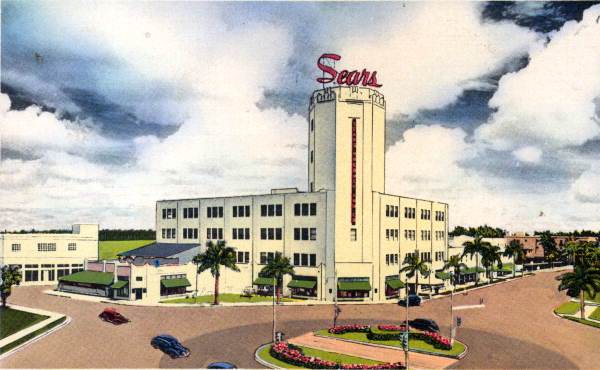
Sears, Edgewater Miami
Directly to the north, the small miramar development, with its ‘malecon’ style esplanade that would eventually become Margaret Pace Park, blossomed next to the Miami Women’s Club, which would become an institution in the neighborhood. To the west, a central avenue ends at the Miami City Cemetery, the burial place of some of the most significant Miami founders and families, including the founder of Miami herself, Julia Tuttle.
Just to the north of the park, a lovely large mediterranean revival house would be made legendary in the 1998 movie ‘There’s Something About Mary.’ It’s been demolished, since an alleged accident with a crane. However, the preservation of the house was the original reason for the quarter-circle shape of Paramount Bay, which would have curved around it.
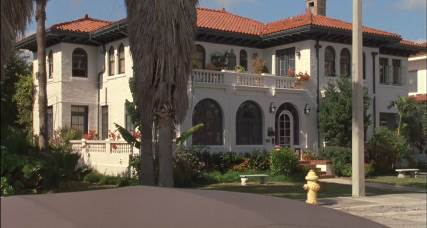
‘There’s Something About Mary’ House, Edgewater Miami
Modernist office buildings proliferated along Biscayne Boulevard in Edgewater in the decades following World War II, the most notable of which is the Bacardi Building. This is one of Miami’s most architecturally iconic structures, with brightly emblazoned tilework and stained glass.
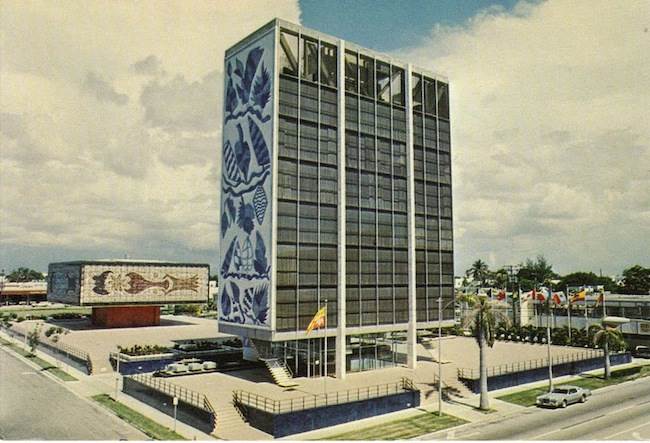
Bacardi Building, Edgewater Miami
As affluent residents fled to the suburbs in the postwar era, driving in to their office buildings by car, upscale waterfront residential towers were built near the causeways and other amenities to lure them back, like the Charter Club, and the Bay Park Towers. Both built to patterns of postwar luxury residential towers that showed great success in other parts of Miami and Miami Beach. In the seventies and eighties came the blocks of development that would encompass the Omni/Venetia neighborhood and, on the opposite end, the Hamilton.
The Hamilton was and is a striking building of 1980s modernity. Developed by Ted Arison, owner of Carnival Cruise Lines, it looks like a cruise ship about to glide its way into Biscayne Bay. Its atrium rivals those on any of Arison’s grandest liners.
A church, called Unity on the Bay, moved onto the site of what was a large bayfront house. The house itself still exists but is no longer bayfront. Not only is it behind a large mid century modern church, but the postwar Biscayne 21 Condominium, designed by the seminal Miami architect Melvin Grossman, was built on infill land directly in front of it.
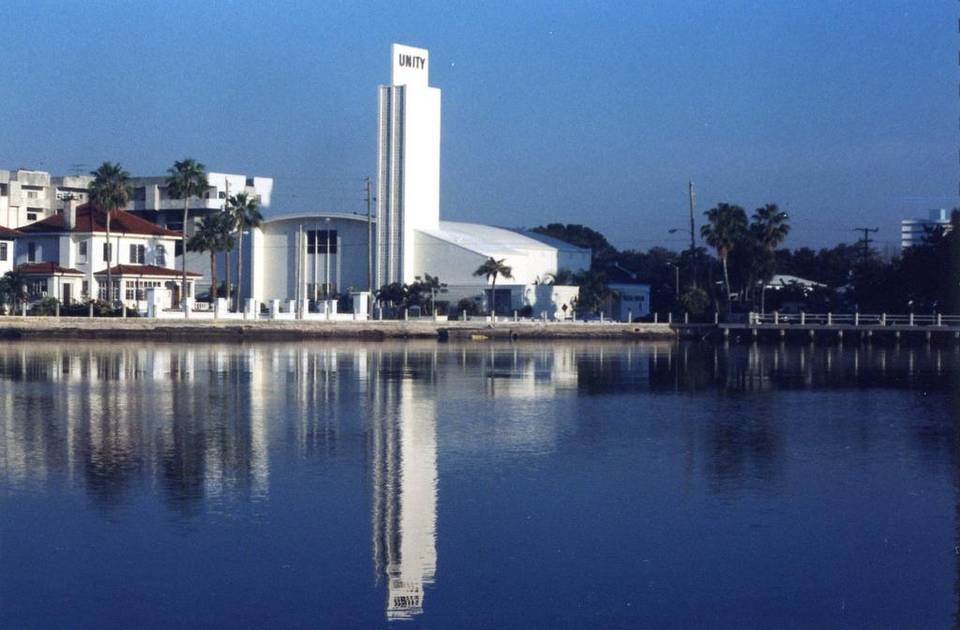
Unity on the Bay, Edgewater Miami
One interesting locale on Margaret Pace Park was the 1800 Club. Now the site of a condominium building, for a very long time a bar by the same name existed on that site that was very popular with employees of the Miami Herald. As most Miamians remember vividly, the Miami Herald Building used to be a few blocks south, on the edge of Edgewater.
Then, of course, there’s the Omni, a single massive building that has defined the south end of the district since it was constructed in 1973. Built as part of the Plaza at Venetia megaproject, which included two residential buildings (the Grand and the Venetia), an indoor shopping mall, and two hotels, the Omni has dominated the south end even far into its non-existence. It was intended as an urban renewal project, wiping the slate clean and demolishing everything on the site, replacing what was there with monolithic towers and the elevated mall.
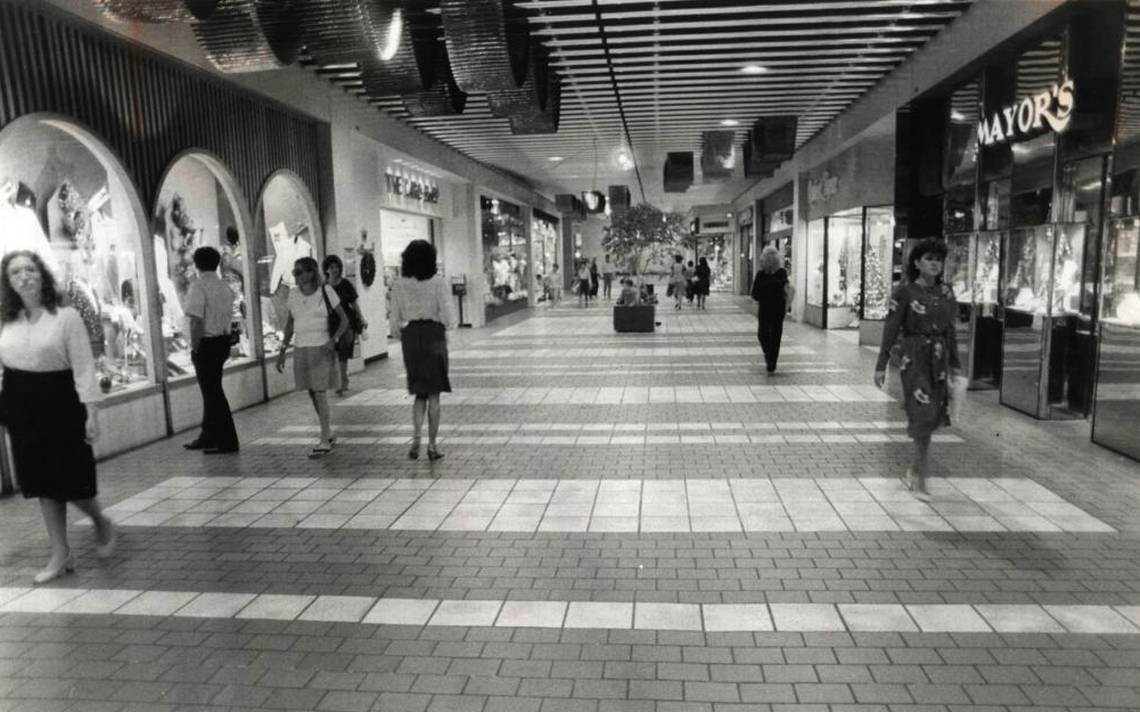
Omni Mall in 1983. BRUCE GILBERT Miami Herald File
The streetscape was hostile to the pedestrian, with the only things at street level being automobile entrances and parking garages. Now owned by casino giant Genting as part of their future Resorts World Miami project, the building remains partially abandoned while the hotel above it continues to operate and an art school occupies the former Jordan Marsh store, which was originally integrated into it.
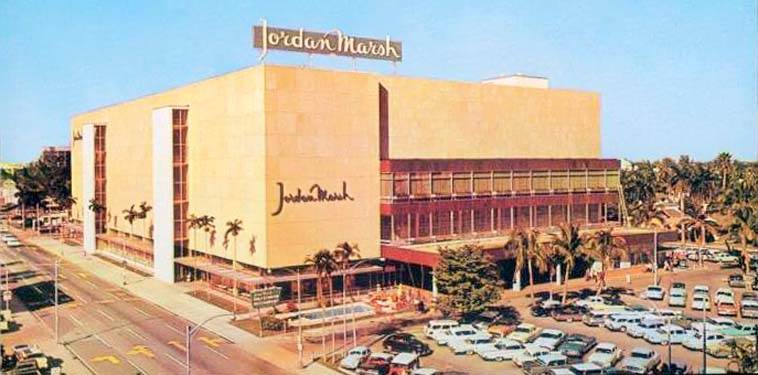
Jordan Marsh, Edgewater Miami
As the Omni briefly brought new life into the south end of Edgewater, and new residential buildings came to the north, the center of Edgewater continued to stagnate, a mish-mash of disjointed streets with an odd mixture of large but gradually dilapidating single-family homes and apartment buildings of all sizes, until quite recently. Even this stretch of Biscayne Boulevard lost most of its desirability as a commercial area. Only after the turn of the millenium did high-density residential development really start to boom across Edgewater. And boy has it boomed.
With dozens of new buildings shooting up since the year 2000, Edgewater has become a swankier and swankier neighborhood that still offers residential capacity stretching the gamut from relatively affordable to quite high-end. Some of the most significant additions to the neighborhood in recent years have or will include Paramount Bay, the Paraiso District, Icon Bay, Elysee, and of course the series of new buildings (The 1800 Club, Quantum on the Bay, Aria on the Bay, etc.) lining Margaret Pace Park.
Share your thoughts with us
Your Miami Condo Awaits
Recent Posts





